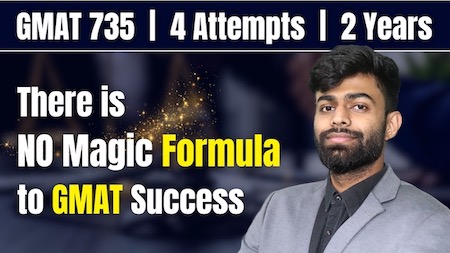Forum Home > GMAT > Quantitative > Problem Solving (PS)

GMAT Club Daily Prep
Thank you for using the timer - this advanced tool can estimate your performance and suggest more practice questions. We have subscribed you to Daily Prep Questions via email.
Customized
for You
Track
Your Progress
Practice
Pays
Not interested in getting valuable practice questions and articles delivered to your email? No problem, unsubscribe here.
According to a prominent investment adviser, Company X has a 50% chanc
[#permalink]
 Updated on: 04 Jan 2024, 23:26
Updated on: 04 Jan 2024, 23:26
5
Kudos
26
Bookmarks
Difficulty:


 85%
(hard)
85%
(hard)
Question Stats:
51% (02:10) correct 49%
(02:51)
wrong
49%
(02:51)
wrong  based on 257
sessions
based on 257
sessions
According to a prominent investment adviser, Company X has a 50% chance of posting a profit in the coming year, whereas Company Y has 60% chance of posting a profit in the coming year.
Select for Least probability for both the least probability, compatible with the probabilities provided by the investment adviser, that both Company X and Company Y will post a profit in the coming year. And select for Greatest probability for both the greatest probability, compatible with the probabilities provided by the investment adviser, that both Company X and Company Y will post a profit in the coming year. Make only two selections, one in each column.
Select for Least probability for both the least probability, compatible with the probabilities provided by the investment adviser, that both Company X and Company Y will post a profit in the coming year. And select for Greatest probability for both the greatest probability, compatible with the probabilities provided by the investment adviser, that both Company X and Company Y will post a profit in the coming year. Make only two selections, one in each column.
| Least Probability for Both | Greatest Probability for Both | |
| 5% | ||
| 10% | ||
| 25% | ||
| 50% | ||
| 60% | ||
| 80% |
ShowHide Answer
Official Answer
Least Probability for Both: 10%
Greatest Probability for Both: 50%
Originally posted by vsgamtttttt on 06 Dec 2023, 00:33.
Last edited by Sajjad1994 on 04 Jan 2024, 23:26, edited 3 times in total.
Last edited by Sajjad1994 on 04 Jan 2024, 23:26, edited 3 times in total.
Formatted
Tutor
Joined: 11 Aug 2023
Posts: 924
Given Kudos: 83
GMAT 1: 800 Q51 V51
Re: According to a prominent investment adviser, Company X has a 50% chanc
[#permalink]
 04 Jan 2024, 23:07
04 Jan 2024, 23:07
16
Kudos
8
Bookmarks
Expert Reply
AvikSaha wrote:
MartyMurray Can you please help here to explain the approach to solve this
According to a prominent investment adviser, Company X has a 50% chance of posting a profit in the coming year, whereas Company Y has 60% chance of posting a profit in the coming year.
Select for Least probability for both the least probability, compatible with the probabilities provided by the investment adviser, that both Company X and Company Y will post a profit in the coming year. And select for Greatest probability for both the greatest probability, compatible with the probabilities provided by the investment adviser, that both Company X and Company Y will post a profit in the coming year. Make only two selections, one in each column.
An intuitive way to handle this question is to see the following.
The maximum probability of any event occurring is 1. So, the maximum probability that either X will post a profit or Y will post a profit is 1.
Now, since 50% + 60% > 1, we see that there must be some times when both occur. In other words, the occurrences of the two events must overlap some of the time. After all, if they didn't overlap, the probability that one or the other would occur would be greater than 1.
If you think about it, the minimum overlap must be 10%. After all, if we fill up 50% of the possible total probability of 1 with the probability that X will be profitable, then we have only 50% of the possible total probability of 1 left for Y. However, the probability that Y will be profitable is 60%. So, that 60% - 50% = 10% extra must overlap with the occurrence of X being profitable.
In mathematical terms, P(X or Y) = P(X) + P(Y) - P(X and Y), and it must be the case that P(X or Y) ≤ 1.
So, if P(X) + P(Y) = 0.5 + 0.6 = 1.1, then to reduce 1.1 to the maximum P(X or Y) of 1, we need to subtract at least 0.1.
Thus, P(X and Y) must be at least 0.1, meaning the correct answer for Least Probability for Both is 10%.
Then, the maximum probability that both will occur at the same time must be 50% since the maximum probability of X posting a profit is 50% and the probability of both posting a profit can't be greater than the probability that one of them will.
So, the correct answer for Greatest Probability for Both is 50%.
Correct Answer: 10%, 50%
Re: According to a prominent investment adviser, Company X has a 50% chanc
[#permalink]
 08 Dec 2023, 06:09
08 Dec 2023, 06:09
19
Kudos
i am not sure whether i know math after seeing this question.











